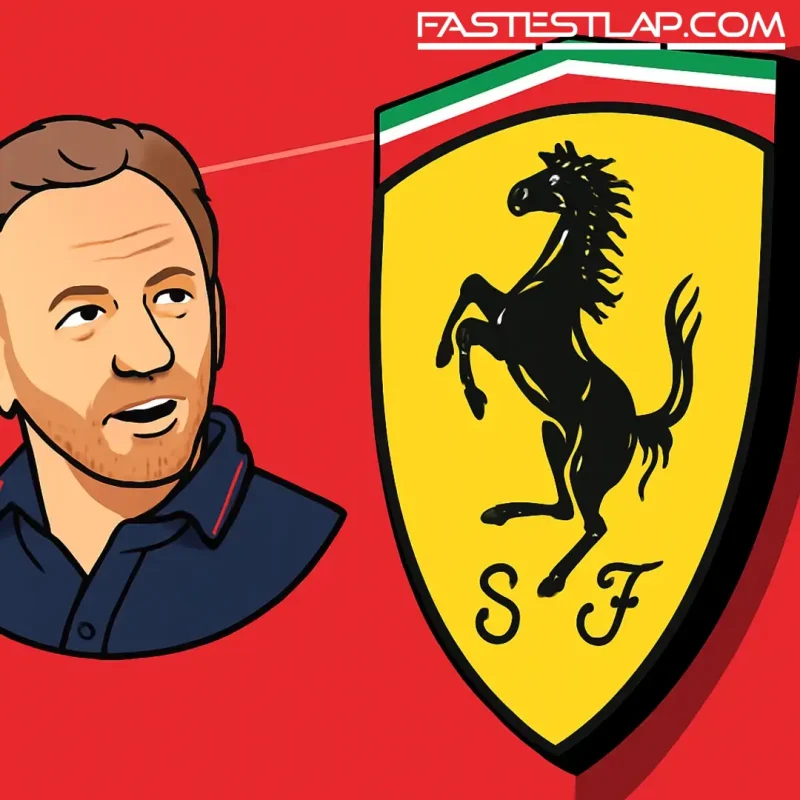Ferrari and Horner: the rumor that refuses to die, and why it still doesn’t add up
Christian Horner’s Red Bull chapter has finally been closed, but the next one isn’t a simple page turn—and certainly not in scarlet. The former Red Bull team principal, formally cut loose after being sidelined from day-to-day duties post-British GP, has been repeatedly linked to Ferrari in recent weeks. It’s an intriguing headline. It’s also, for now, an ill-fitting story.
Let’s deal in facts and the paddock’s best-informed whispers. Red Bull confirmed Horner’s complete exit after removing him from company directorships and installing Laurent Mekies to cover the operational vacuum. Reports suggest an exit package north of $100 million and a notional pathway back to F1 around mid-2026. Since then, the carousel of speculation hasn’t stopped spinning—Ferrari included.
From Maranello’s side, there’s been no formal signal of intent. Frederic Vasseur has inked a fresh three-year deal and remains in the chair as Ferrari steers toward the 2026 rules reset with Charles Leclerc and seven-time champion Lewis Hamilton as its standard bearers. That alone should steady nerves. And yet, the rumor persists: chairman John Elkann mulling a change, Ferrari quietly checking options, Horner as the nuclear option if 2026 starts soft.
Here’s the snag. Those close to Horner aren’t painting the picture of a man itching to put the headset back on. Two decades on the pit wall appear quite sufficient. If he comes back, it’s expected to be above the team-principal grade: control, authority, and ideally equity. That last point is key, and it’s where Ferrari—for all its allure—looks like an imperfect match.
Horner’s split from Red Bull wasn’t about trophies; it was about who holds the keys. A power struggle with Red Bull GmbH leadership—most pointedly Oliver Mintzlaff—ended with the parent company tightening its grip. Horner’s desire to run the show from Milton Keynes clashed with an Austria-first vision. At Ferrari, the principal is a figurehead in a vast machine. The Scuderia is publicly traded, with Exor and Piero Ferrari as major shareholders. Equity? Out of the question. Unilateral control? Not how Maranello works.
Even if Ferrari’s timelines loosely align—Horner’s possible mid-2026 availability with the first read on Vasseur 2.0—it still feels like two philosophies passing in the night. Ferrari has finally found relative stability. Horner wants something more sovereign than the job title on the garage door.
Elsewhere in the paddock, the phone lines have lit up—and, in some cases, been firmly put down. Aston Martin’s Andy Cowell initially swerved the question, then returned the next day to flatly rule out “any plans for involvement of Christian either in an operational or investment role.” Haas admitted to an exploratory chat—via a representative, not Gene Haas directly—but the American owner remains unmoved by repeated pitches to buy in. “He’s not interested in selling at all,” team boss Ayao Komatsu said this summer, adding that persistent bidders have even annoyed Haas. Alpine? Flavio Briatore and Horner are long-time friends, but new managing director Steve Nielsen says there’s “no truth” to any move—while sensibly conceding this is Formula 1, where never say never is almost a company motto. Renault, for its part, insists it’s staying put.
So where does that leave Horner? Potentially shopping above the team-principal aisle. The word is he’s assembled serious financial firepower—enough to take a meaningful bite out of most teams if a window opens. If it doesn’t, starting fresh is the other path. He’s done it before: Arden grew from a family-run hustle into a multi-title junior powerhouse. But founding an F1 operation in the 2020s is a different beast, with stricter financial barriers, franchise values, and the politics of entry. Even so, conversations with F1 CEO Stefano Domenicali about future grid slots have reportedly happened. That door isn’t shut; it’s just heavily reinforced.
There’s also the human factor. Despite the bruising finish at Red Bull, Horner’s competitive instinct hasn’t dulled. He didn’t spend two decades building a dynasty to fade out quietly. But the comeback has to fit the man he is now. A Ferrari pitch that says, “Stand here, wear this, answer to us,” doesn’t sound right. A project that says, “Here are the keys—build it in your image,” does.
All of which points to an answer most fans won’t love: patience. Ferrari is an easy rumor, a seductive idea and a tidy headline. The reality is messier. Unless something seismic changes in Maranello—or Vasseur’s 2026 start triggers emergency thinking—it’s hard to see Horner in red. The more plausible outcome is either a stake-and-steer role elsewhere if an owner blinks, or the long game: a new entry built around his blueprint, his backers, his rules.
That would take time. It might even miss the first wave of the 2026 era. But if the past few months proved anything, it’s that this story isn’t over. Horner will be back when the structure matches the ambition. And when it does, he won’t be taking anyone else’s playbook to the pit wall. He’ll be writing his own.




